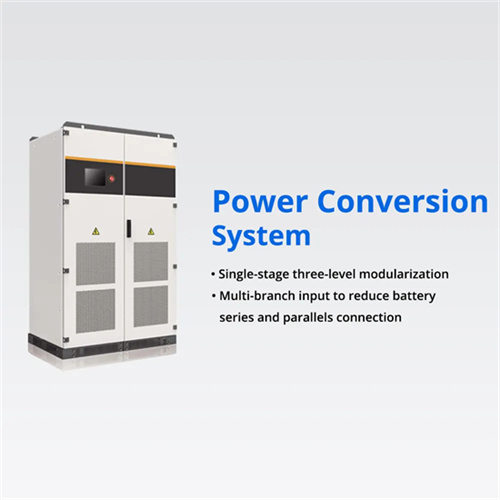Sfe solar Antarctica

New study shows renewable energy could work as
To begin with, according to Ralph Muehleisen, chief building scientist and group manager for Buildings & Industrial Technologies at Argonne, the team wanted to know if using solar energy sources during the austral

Overview: Renewable Energy at the South Pole
Towards a greener Antarctica: A techno-economic analysis of renewable energy generation and storage at the South Pole ANL: Susan Babinec (energy storage), Ralph Muehlsein (solar modeling & system design), Amy Bender (CMB exp, S. Pole), NREL: Nate Blair (economics), Ian Baring-Gould (wind modeling), Xiangkun Li (system optimization), Dan Olis

Renewable energy in Antarctica
A feasibility study on the topic of expanding renewable energies in Antarctica at Neumayer Station III (NM3) has been conducted. Today, the station is mainly operated with polar diesel in combination with combined heat and power plants, resulting in high CO 2 emissions (714 t/a). By mapping the station in the simulation program TRNSYS

Renewables in Antarctica: an assessment of progress to
One of the first uses of solar energy in Antarctica was to heat water and melt ice. As solar PV panels became more efficient and cheaper, they began to be incorporated into the production

New study shows renewable energy could work as power source
To begin with, according to Ralph Muehleisen, chief building scientist and group manager for Buildings & Industrial Technologies at Argonne, the team wanted to know if using solar energy sources during the austral summer (November-February) would be feasible as a means of substantially reducing diesel fuel usage at the South Pole.

Renewables in Antarctica: an assessment of progress to
One of the first uses of solar energy in Antarctica was to heat water and melt ice. As solar PV panels became more efficient and cheaper, they began to be incorporated into the production of electricity in Antarctica. For example, Wasa

Energy efficiency and renewable energy under extreme conditions:
Over the past three decades, improved building design, behavioral change, cogeneration, solar collectors, solar panels and wind turbines have been found to be effective in Antarctica, demonstrating that harsh environmental conditions and technological barriers do not have to limit the deployment of energy efficiency and renewable energy.

Enhancing renewable energy production in Antarctica
design of the solar power plant can be used to control snow accumulation and erosion in the plant. According to the study ''Renewables in Antarctica: An assessment of progress to decarbonise the energy matrix of research facilities'', solar energy became preva-lent in Antarctic operations in the last decade. It was mainly introduced either to

Renewables in Antarctica: an assessment of progress to
One of the first uses of solar energy in Antarctica was to heat water and melt ice. As solar PV panels became more efficient and cheaper, they began to be incorporated into the production of electricity in Antarctica. For example, Wasa Station (Sweden) uses solar energy to provide both heating and electricity.

Solar power
The first Australian solar farm in Antarctica was switched on at Casey research station in March 2019. The system of 105 solar panels, mounted on the northern wall of the ''green store'', provides 30 kW of renewable energy into the power grid.

6 FAQs about [Sfe solar Antarctica]
Can solar energy be used in Antarctica?
Solar energy has also become prevalent in Antarctic operations in the last decade. This type of energy was mainly introduced either to complement wind energy or in summer bases, summer shelters and on expedition equipment that can be powered by solar energy (radios, very-high-frequency (VHF) repeaters).
What is a hybrid energy system in Antarctica?
Many national Antarctic programmes (NAPs) have adopted hybrid systems combining fossil fuels and renewable energy sources, with a preference for solar or wind depending on the specific location of the research station and previous experiences with certain technologies.
What challenges do solar and wind systems face in Antarctica?
The extreme weather conditions and complex logistics of Antarctica put both solar and wind systems under huge stress, which generates operational, technological and budgetary challenges that are also explored in this work. Percentage of total energy consumption covered by renewable energy sources in Antarctic facilities.
How many solar panels are there in Antarctica?
The first Australian solar farm in Antarctica was switched on at Casey research station in March 2019. The system of 105 solar panels, mounted on the northern wall of the ‘green store’, provides 30 kW of renewable energy into the power grid. That’s about 10% of the station’s total demand.
Does Gregor Mendel Antarctic Station use solar energy?
Solar energy utilization in overall energy budget of the Johann Gregor Mendel Antarctic station during austral summer season. Czech Polar Reports, 5, 10.5817/cpr2015-1-1. CrossRef Google Scholar
Can solar panels run in Arctic and Antarctica?
In fact, some studies suggest that cooler temperatures can help solar panels run more efficiently. Instead, solar panels rely on solar radiation to produce energy. So, the question isn’t whether the Arctic and Antarctica are warm enough, but whether they get enough sun exposure. The fact is that we can use solar panels at the poles.
Related Contents
You may like
- Energy Storage Innovations in Denver 2017: A Retrospective Analysis
- Africa's Energy Storage Revolution: Policies Shaping Tomorrow's Power Grids
- AC-Coupled Energy Storage Systems: The 10-Year Game Changer for Modern Microgrids
- The Most Efficient Form of Energy Storage in the Body: Why Your Fat Cells Are Secret Superheroes
- CATL EnerOne: Revolutionizing Industrial Peak Shaving in the Middle East
- Why Tesla's Powerwall Sodium-ion Tech is Revolutionizing Middle East Data Centers
- Starch: The Polysaccharide Powerhouse for Energy Storage in Plants and Beyond